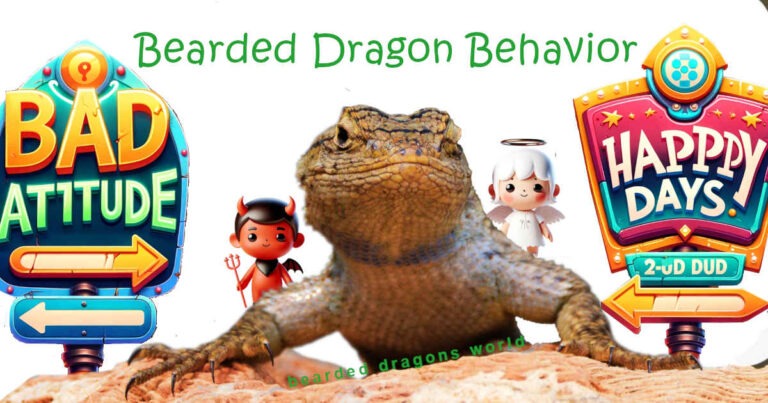
Welcome to Bearded Dragons World, your go-to for research-backed insights on care, diet, health, habitats, and more. Dive into enriching your pet bearded dragons life with engaging content and tips.
Jump To…
Starting Out with Bearded Dragons? Here’s what you need to know
Welcome to Bearded Dragons World, a comprehensive online resource for bearded dragon owners since 2013. Embarking on the journey of bearded dragon ownership is exciting. Here you will find information and guides for every step along the way, from selecting the right dragon to understanding the essentials of their care and habitat.
Discover what makes these creatures exceptional pets, learn about their expected lifespan, and explore the best practices for creating a nurturing environment. Our comprehensive guides cover everything from the nutritional needs of your future pet to the setup of their habitat, ensuring you’re well-prepared to welcome your new bearded dragon.
Whether you’re curious about how long bearded dragons live, seeking advice on diet, or wondering about the ideal living conditions, Bearded Dragons World offers a wealth of information tailored to the needs of soon-to-be pet owners. Dive into our articles, care tips, and community insights to ensure your bearded dragon thrives from day one.
Engage with the Bearded Dragons World community and start your journey with confidence, equipped with knowledge and support to provide the best care for your new companion.
Are Bearded Dragons Good Pets?
Bearded dragon are a good pet and popular choice due to their friendly behavior. Key considerations include setting up an ideal environment that replicates their natural Australian habitat, ensuring proper lighting and temperature control, and providing a balanced diet of insects and greens. Understanding the care requirements and health needs of bearded dragons is essential for a fulfilling companionship. While they are generally low-maintenance, the commitment to their well-being is vital for first-time reptile owners.
Recommended Posts for Beginners
Costs of Owning a Bearded Dragon
Discover the comprehensive guide to understanding the costs of owning a bearded dragon. Navigate through initial expenses and ongoing maintenance costs with our 4 calculators:
- How Much do Bearded Dragons Cost?
- How Long Will it take to Save for my Bearded Dragon?
- How Expensive are Bearded Dragons to Maintain?
- How Much Does a Bearded Dragon Cost in Electricity?
From estimating the cost of purchasing a bearded dragon to planning for its long-term care, our calculators come pre-loaded with a list of the basics for care. The electricity calculator will help you work out how much bearded dragons cost in electricity.
What is the Best Age to Get a Bearded Dragon?
Not sure what age to get a bearded dragon? Choosing the right age to get a bearded dragon—baby, juvenile, or adult—depends on the your experience, time, and commitment. For beginners, adult bearded dragons are suggested due to their predictable behavior, lower care needs, and less frequent feeding schedule. Juveniles offer a balance, requiring moderate care and offering a chance to experience some growth stages but it is also a very vulnerable time in their lives requiring the right conditions to avoid health issues later. B
Is it Better to Get a Male or Female Bearded Dragon?
Selecting a male or female bearded dragon involves understanding the differences between them. Males tend to be larger and more territorial, especially during breeding season, while females may be smaller and more docile but come with reproductive health considerations. Housing, dietary needs, and social interactions also vary by sex, influencing the decision.
Questions to Ask When Buying a Bearded Dragon
When buying a bearded dragon, look at health, age, gender, and background. Research the source, whether a breeder, private seller, or pet store, to ensure ethical practices. Consider ongoing costs and the pet’s care needs to ensure compatibility. Options include adoption, private sellers and breeders, offering different benefits and responsibilities. Key factors include the bearded dragon’s living conditions, diet, and any special needs due to health or past injuries. A thorough health check, understanding the reptile’s history, and considering future expenses are essential steps to a rewarding companionship with a bearded dragon.
Licence to Keep Bearded Dragons (Australia
In Australia, the requirement for a licence to keep a bearded dragon varies by state, reflecting the commitment to the welfare of these reptiles and the ecosystem. In ACT and NT, no licence is needed, while NSW, QLD, and VIC require one, with specific conditions such as age limits and application fees. SA does not demand a licence, but TAS prohibits bearded dragon ownership. WA also mandates a licence, emphasizing the importance of understanding and complying with local regulations for responsible bearded dragon care and ownership.
The number one cause of illness in captive reptiles, and their subsequent presentation to the reptile veterinarian, is improper husbandry.
S. L. Wilkinson, Reptile Wellness, 2015
Nutrition, caging, temperature, lighting, humidity, substrate, and so forth are all important for a captive reptile’s health. In more recent years, concern over providing exercise and opportunities to exhibit natural behaviors has also increased.
Experienced owner? Some Navigation Assistance
Welcome to Bearded Dragons World, your comprehensive resource for enhancing the well-being of your beloved beardie. Delve into information covering health, nutrition, habitat setup, and beyond. Connect with fellow passionate owners, share experiences, and discover new ways to enrich your bearded dragon’s life.
Here you can be part of our community, share your experiences and discover new ways to enrich your bearded dragon’s life. Explore information on your bearded dragon’s diet, and creating dynamic habitats that mimic their natural environment, hydration, diet, understanding behaviors or sleeping patterns, curious about the average lifespan of your companion, or looking for fun, we provide the knowledge you need to ensure their well-being.
Randomised Posts to Spice Things Up!
Whats New? Recent Posts
References
Wilkinson, S. L. (2015). Reptile Wellness Management. Veterinary Clinics of North America: Exotic Animal Practice, 18(2), 281–304.
BEARDED DRAGONS SMART
BEARDED DRAGONS BETTER
BEARDED DRAGONS WORLD























